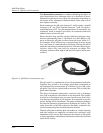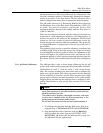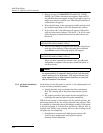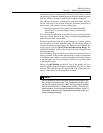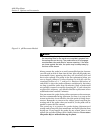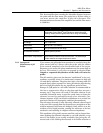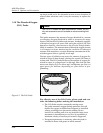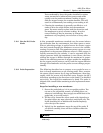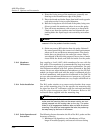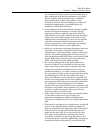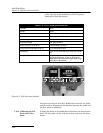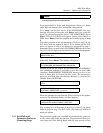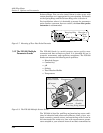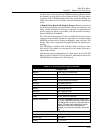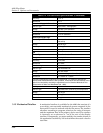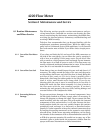
4220 Flow Meter
Section 5 Options and Accessories
5-20
4. Place the O-ring on top of the membrane, generally con-
forming to the circumference edge of the probe.
5. Place the thumb and index finger from both hands opposite
each other on the O-ring at equal distances.
6. Roll the O-ring down over the end of the probe, being care-
ful not to touch the membrane where it covers the probe.
7. Trim off excess membrane with scissors or a sharp knife.
Check to see that the stainless steel rod (thermistor) pro-
truding below the liquid cup is not covered by extra mem-
brane.
Note
There must be no bubbles under the membrane and no
creases in it for the probe to function correctly.
8. Shake any excess KCl solution from the probe. Reinstall
the sensor guard. Keep the sensor in a humid environment
when not in use and between measurements. The plastic
bottle that was placed over the end of the sensor when it
was shipped is ideal for this purpose. Place a piece of moist
tissue inside the bottle, and slide the bottle over the probe.
5.10.3 Membrane
Thicknesses
Isco supplies a 2 mil (.002") thick membrane for use with the
D.O. probe. This membrane is recommended for long-term moni-
toring situations only, typical of our users' applications. Use only
this thickness membrane with D.O. probes connected to Isco flow
meters. Do not use other thickness of membranes as the 270 D.O.
module (no longer sold) used with the probe is calibrated only for
the 2-mil membrane, and cannot be recalibrated in the field. Do
not use other membrane thicknesses or inaccuracy will result.
Besides, the thinner membranes are very fragile and difficult to
install.
5.10.4 Probe Installation The D.O. probe attaches to a sensor carrier bracket that snaps
into an Isco mounting ring. Use the specific size mounting ring
for pipes less than 15" in diameter, and the universal mounting
ring for pipe sizes greater than 15" diameter. Refer to the
instruction sheet supplied with the mounting ring.
Note
When installing the D.O. probe and its sensor carrier bracket,
make sure the mounting slots on the sensor carrier are com-
pletely pressed into the mating tabs on the ring. The probe
relies on a full engagement between tabs and slots for secure
mounting. If the slots are loose against the tabs, the probe may
be swept away by the force of the stream.
5.10.5 Probe Operation and
Precautions
The following factors determine the life of the D.O. probe and the
frequency of service.
• Membrane life depends on use. Membranes will last
longer if installed properly and treated with care during



